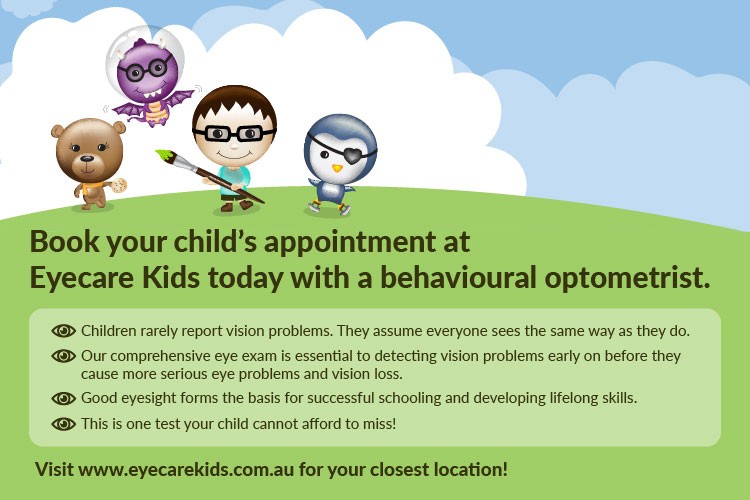1 in 12 people suffer from an eye teaming problem called Convergence Insufficiency.
Convergence Insufficiency, a condition which is often overlooked during an eye test, and not widely understood by the general health profession, can have a huge impact on an individual’s level of visual comfort, particularly with near work tasks.
Behavioural optomerist, SooJin Nam explains, “I once saw a lovely 7 year old girl who told her mother she sometimes saw two of her and of things around her. It could happen any time during the day. Sometimes when she woke up, sometimes during school and sometimes at the end of the day. Medically she was fine and when we tested her vision, it turned out she had a type of convergence insufficiency called Intermittent Exotropia. This is an extreme form of Convergence Insufficiency. This is when the Convergence Insufficiency is so bad the eyes lose their teaming ability completely and their eyes point at two difference spots instead of one. Most children would simply complain of sore eyes, avoid near work or cover one of their eyes as a way of managing their symptoms.
What is Convergence Insufficiency?
Convergence Insufficiency is a term that describes an inability of the eyes to turn in towards the nose. This restriction leads to discomfort during near viewing tasks. As the sufferer cannot fixate on a near target evenly with both eyes, common symptoms they experience include double vision and reduced focusing. Asthenopia, which is an umbrella term that describes blurred, painful or uncomfortable eyes is another common visual complaint.
How can you tell if your child has Convergence Insufficiency?
If your child complains of headaches (especially around the eyes) after reading or writing, it is likely that Convergence Insufficiency could be present. They may also complain of double images when viewing near objects, or experience eye strain when attempting to “cross your eyes”. As a behavioural optometrist, we look for certain signs that may indicate this condition is affecting your child’s learning ability. After all, if it’s uncomfortable to look at something, it’s not unreasonable to expect their comprehension to go down as well!
This is a useful checklist to be mindful of:
- Closes or covers one eye
- Occasionally sees double
- Rubs eyes frequently
- Able to read for a short time only
- Poor reading comprehension
How is it diagnosed?
Convergence insufficiency is diagnosed after using several different tests during an eye test to see how a person performs at near. These include terminology such as: Phoria, Fusion Reserves, Near Point Convergence, AC/A Ratio, Prism Facility, Stereo Test, Maddox and so on. Sometimes this condition is associated with other functional vision problems such as Accommodation and Ocular Motor Tracking.
How do we treat this?
Convergence insufficiency can be easily treated in two ways: sometimes glasses can provide instant relief and make things more comfortable, particularly if there is an accommodative component to their discomfort. The second way is to teach the student to learn how to direct their vision more efficiently through vision therapy.
Eyecare Kids provides behavioural optometry services and vision therapy as part of a more holistic approach of looking after a child’s visual system. Particularly tailored for children, vision therapy programs are offered to assist children with tracking, focusing and teaming problems as well as lazy eyes and eye turns. With a child-friendly environment, each consultation is fun and interactive, with educational qualities that ensure children improve at their own pace and develop confidence as well as clarity with their future.
Optometrists Association Australia recommends that children have a full eye examination with an optometrist before starting school and at least every two years thereafter. Eye examinations usually attract a Medicare rebate and no referral is required.

